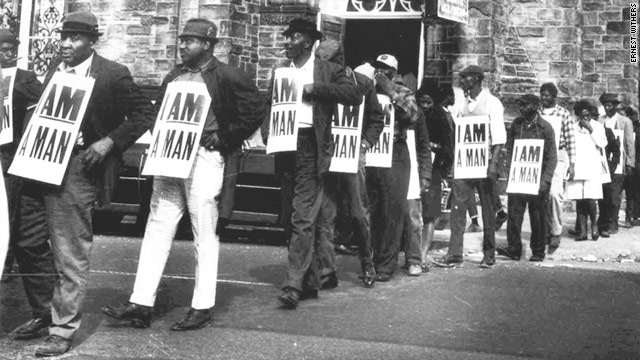http://www.cnn.com/2011/LIVING/02/18/archiving.civil.rights/index.html?hpt=C1By Eliott C. McLaughlin, CNN
February 18, 2011 9:55 a.m. EST

Signs carried by striking Memphis sanitation workers in 1968 and photographed by Ernest Withers are now historic artifacts.
(CNN) -- The hard-won fight for civil rights could go down as one of the most thoroughly archived periods in American history, largely because participants kept photos and objects that would later tell their stories.
The revolution demanded it, even if the keepers of history at the time didn't.
At the height of the movement, there was no market for historic African-American artifacts. Mainstream museums weren't interested in documenting it, and "if you look at how museums and scholars had interpreted African-American history up until the '60s, it had been very biased and one-sided," said John Fleming, director of the International African-American Museum in Charleston, South Carolina.
"The civil rights movement itself sparked a consciousness on the part of black people that they needed to preserve their documents and culture."
Important items were tucked away and began to surface in the 1970s and 1980s. A handful of African-American museums blossomed to more than 100 by the early 1990s. Today, the Association of African American Museums boasts 250 members.
"Communities wanted to be in control of their own history, culture and artifacts. They wanted to be the interpreters of that history and culture," said Fleming, who also was executive producer of "America I Am," a traveling 12,000-square-foot exhibition highlighting African-American achievements.
Still, putting together a collection isn't easy.
FULL story at link.